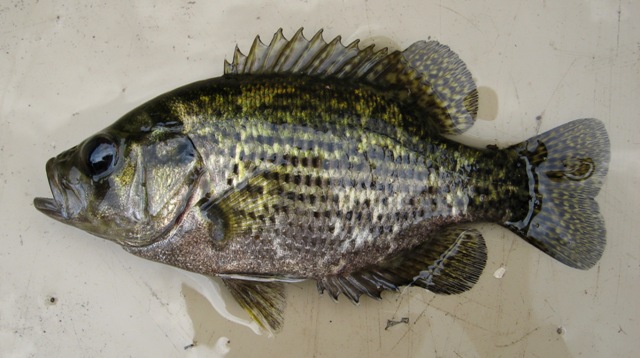Rock Bass
(Ambloplites rupestris)

Rock bass are native to Ohio and are widespread. They can be found from Lake Erie to the Ohio River.
Description
Rock bass are not as deep bodied as bluegill or redear sunfishes but are deeper bodied than largemouth or smallmouth bass. Rockbass can change from light to dark colored very quickly to blend in with their surroundings. They can range from a light silver color with rows of dark spots along their body to being very dark colored with large dark blotches over much of their body. They also have a very large mouth and red eyes. They are most similar to the warmouth sunfish which have 3 anal spines compared to the 6 that a rock bass has. Rock bass have a dark teardrop under the eye and a black margin to the fins. Warmouth do not have a teardrop and have a light colored margin to the fins that can be white, orange, yellow, or red.
Habitat and Habits
Rock bass prefer clear streams and rivers with a rocky bottom. They often hide near large boulders, rock piles, or tree roots. Also look for them near steep drop offs at the edge of deep pools. They are rarely found in Ohio reservoirs, and when they are present only small populations are found along steep rocky shorelines in some of the largest reservoirs. The warmouth sunfish can be found more frequently in smaller lakes and reservoirs, usually associated with brush piles or dense rooted aquatic vegetation. Rock bass are also common in Lake Erie, especially around the islands and other rocky areas of the western basin.
Reproduction and Care of the Young
Male rock bass build nests over gravel substrate in a slight current often next to a large boulder. Females then deposit up to 10,000 eggs in a nest, often with more than one female using the same nest. Males remain over the nest to fan the eggs and maintain water flow over the eggs until they hatch in three to four days. Rock bass typically reach maturity in 3 years.